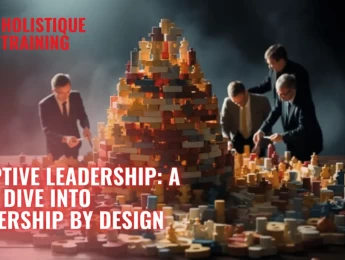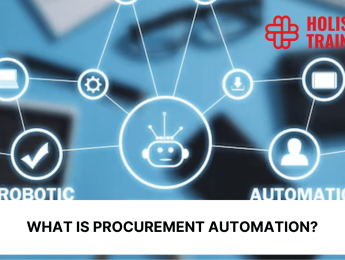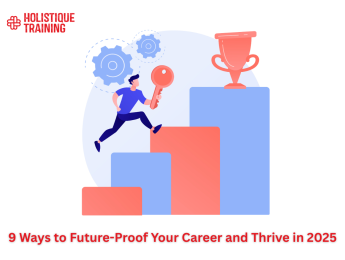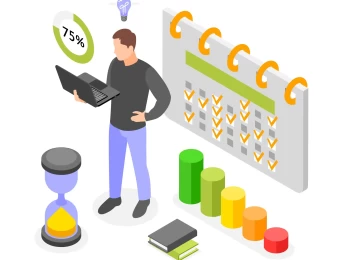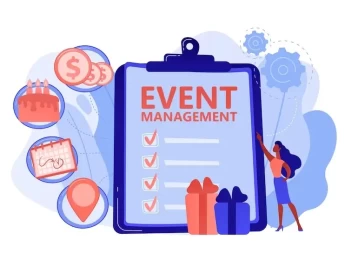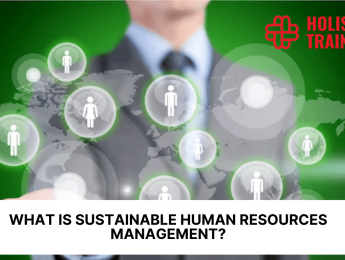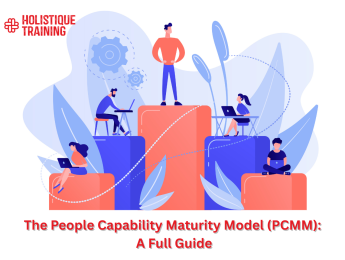- Table of Contents
- Foundations of Leadership by Design
- Evolution of Leadership Concepts:1. Contemporary Leadership Trends:
- The foundations of Leadership by Design involve a deep exploration of current leadership trends. This includes the rise of collaborative and distributed leadership, the importance of emotional intelligence, and the integration of technology in leadership practices. Analyzing these trends helps in shaping a leadership model that is relevant in the present context.2. Cultural and Diversity Considerations:
- Recognizing the significance of cultural intelligence and diversity is crucial. Leadership by Design understands that effective leaders must navigate diverse cultural landscapes, fostering inclusivity and leveraging the strengths that diversity brings. It incorporates cultural competency as a cornerstone, ensuring leadership resonates across global contexts.3. Adaptive Leadership Mindset:
- Shifting Paradigms in Leadership:The Rise of Transformational Leadership:
- Collaborative Leadership Models:
- Balancing Stability and Agility:
- Components of Leadership by Design
- Visionary Leadership:1. Crafting a Compelling Vision:
- Strategic Decision-Making:1. Analyzing and Evaluating Options:
- Adaptive Communication:
- Design Thinking in Leadership:
- Applying Design Thinking to Leadership:
- 1. Empathy in Leadership:
- Empathy is a cornerstone of Design Thinking in Leadership. Leaders actively seek to understand the perspectives, needs, and challenges of their team members and stakeholders. By empathizing with those they lead, leaders can develop solutions that genuinely address concerns, enhance engagement, and build a more collaborative and inclusive work environment.2. Ideation and Brainstorming:
- Design Thinking encourages leaders to facilitate ideation sessions and brainstorming activities. These sessions bring together diverse perspectives, fostering a rich exchange of ideas. Leaders create an environment where team members feel comfortable sharing their thoughts, leading to the generation of innovative solutions and approaches.3. Prototyping and Testing:
- Challenges and Considerations:
- Balancing Creativity with Practicality:
- Overcoming Resistance to Change:
- Sustaining a Design Thinking Culture:
- Challenges and Critiques in Leadership by Design
- Potential Drawbacks of Leadership by Design:
- Collaborative Innovation Ecosystems:
- Blockchain for Transparent Leadership:
Introduction
In the evolving landscape of leadership, a groundbreaking paradigm has emerged—Leadership by Design. This forward-thinking approach blends traditional principles with modern methodologies, offering a proactive and adaptable leadership style. Join us on a journey through the foundations, components, and challenges of Leadership by Design, exploring its transformative power and anticipating the trends that will shape the future of leadership.
Foundations of Leadership by Design
Leadership by Design is a contemporary leadership approach rooted in a dynamic fusion of traditional leadership principles, evolving organizational needs, and innovative methodologies. The foundations of Leadership by Design lay the groundwork for a leadership style that is not only proactive but also adaptable in an ever-changing business landscape.
Traditional Leadership Models:
1. Leadership Evolution:
Leadership by Design acknowledges the historical evolution of leadership theories. It appreciates the contributions of classical models like trait theory, behavioral theory, and contingency theory. Understanding the historical context provides a basis for recognizing the strengths and limitations of these traditional approaches.
2. Leadership Archetypes:
The foundations include an exploration of archetypal leadership figures. Examining iconic leaders, from transformational figures to servant leaders, offers insights into the diverse ways leadership has been conceptualized. Leadership by Design synthesizes these archetypes to create a versatile leadership philosophy that draws from various inspirations.
3. Lessons from Past Leadership Challenges:
Learning from past leadership challenges and failures is a crucial aspect. Examining case studies and historical examples provides valuable lessons in resilience, adaptability, and the importance of ethical decision-making. Leadership by Design aims to integrate these lessons into a forward-looking approach.
Evolution of Leadership Concepts:
1. Contemporary Leadership Trends:
The foundations of Leadership by Design involve a deep exploration of current leadership trends. This includes the rise of collaborative and distributed leadership, the importance of emotional intelligence, and the integration of technology in leadership practices. Analyzing these trends helps in shaping a leadership model that is relevant in the present context.
2. Cultural and Diversity Considerations:
Recognizing the significance of cultural intelligence and diversity is crucial. Leadership by Design understands that effective leaders must navigate diverse cultural landscapes, fostering inclusivity and leveraging the strengths that diversity brings. It incorporates cultural competency as a cornerstone, ensuring leadership resonates across global contexts.
3. Adaptive Leadership Mindset:
The evolution of leadership concepts emphasizes the need for adaptability. The pace of change in the business environment demands leaders who can pivot, innovate, and guide their teams through uncertainty. Leadership by Design encourages an adaptive mindset that views change as an opportunity for growth rather than a threat.
Shifting Paradigms in Leadership:
The Rise of Transformational Leadership:
Leadership by Design places a strong emphasis on transformational leadership, recognizing that leaders must inspire and motivate their teams toward a shared vision. It explores the characteristics of transformational leaders, such as charisma, vision, and the ability to empower others.
Collaborative Leadership Models:
In a world where collaboration is increasingly essential, Leadership by Design embraces collaborative leadership models. This involves breaking down hierarchical barriers, promoting cross-functional collaboration, and fostering a culture where diverse perspectives contribute to innovative solutions.
Balancing Stability and Agility:
The foundations of Leadership by Design acknowledge the need for stability and agility. Striking the right balance between maintaining organizational stability and being agile in response to external disruptions is a critical aspect. Leaders practicing Leadership by Design are adept at navigating this delicate equilibrium.
In essence, the foundations of Leadership by Design synthesize the wisdom of traditional leadership models, adapt to the evolving landscape of leadership concepts, and embrace a mindset that is responsive to shifting paradigms. This multifaceted approach equips leaders with a comprehensive toolkit to lead organizations effectively in a world characterized by change and complexity.
Components of Leadership by Design
Leadership by Design is a holistic and adaptive leadership approach that comprises several interrelated components. These components form the framework through which leaders can effectively navigate challenges, inspire teams, and drive organizational success. The intricate nature of Leadership by Design involves a nuanced understanding of visionary leadership, strategic decision-making, and adaptive communication.
Visionary Leadership:
1. Crafting a Compelling Vision:
At the core of Leadership by Design is the ability to craft a compelling and inspiring vision. Visionary leaders articulate a clear, ambitious, and purpose-driven direction for the organization. This involves a deep understanding of the organization's values, mission, and its role in the broader context. The vision serves as a guiding light, aligning the efforts of the team towards a shared future.
2. Aligning Vision with Organizational Goals:
Leadership by Design ensures that the visionary aspect is not detached from the practical realities of the organization. Effective leaders align the grand vision with specific, measurable, and achievable goals. This alignment creates a roadmap that transforms the vision into actionable steps, fostering a sense of direction and purpose among team members.
Strategic Decision-Making:
1. Analyzing and Evaluating Options:
Strategic decision-making in Leadership by Design involves a comprehensive analysis of available options. Leaders consider data, market trends, and potential outcomes to make informed decisions. The emphasis is on avoiding impulsive choices and instead embracing a methodical approach that considers both short-term gains and long-term consequences.
2. Balancing Short-Term and Long-Term Goals:
A key component is the ability to balance short-term objectives with long-term strategic goals. Leaders in a Leadership by Design framework recognize the importance of achieving immediate milestones while maintaining a focus on the broader, future-oriented vision. This dual perspective allows for agility in response to immediate challenges without losing sight of the overarching strategy.
Adaptive Communication:
Tailoring Communication Styles:
Adaptive communication is central to Leadership by Design. Leaders understand that effective communication requires tailoring their style to different contexts and audiences. This includes recognizing the diversity within the team, adapting communication channels, and being adept at conveying complex information in a manner that resonates with various stakeholders.
Fostering Open and Inclusive Dialogue:
Communication in Leadership by Design goes beyond one-way directives. Leaders foster open and inclusive dialogue, creating an environment where team members feel heard and valued. This inclusive approach encourages the exchange of ideas, promotes innovation, and builds a collaborative culture where diverse perspectives contribute to the organization's success.
Design Thinking in Leadership:
Design Thinking, a human-centered approach to problem-solving andinnovation, has found its way into the realm of leadership, giving rise to a transformative approach known as Design Thinking in Leadership. This methodology, rooted in empathy, collaboration, and iterative processes, brings a fresh perspective to leadership practices, fostering adaptability and creativity in the face of complex challenges.
Human-Centric Philosophy:
At the core of Design Thinking in Leadership is a commitment to understanding and addressing the needs of individuals—both team members and stakeholders. This human-centric philosophy involves empathizing with the experiences and perspectives of others, ensuring that solutions are not only effective but resonate with the people involved.
Iterative Problem-Solving:
Design Thinking embraces an iterative approach to problem-solving. Leaders utilizing Design Thinking continuously cycle through stages of ideation, prototyping, testing, and refining. This iterative process allows for the flexibility to adjust strategies based on real-time feedback, adapting to evolving circumstances and requirements.
Creativity and Innovation:
A fundamental aspect of Design Thinking in Leadership is its emphasis on fostering creativity and innovation. Leaders encourage a culture that values out-of-the-box thinking, experimentation, and the exploration of unconventional solutions. By infusing creativity into the decision-making process, leaders can uncover novel approaches to complex challenges.
Applying Design Thinking to Leadership:
1. Empathy in Leadership:
Empathy is a cornerstone of Design Thinking in Leadership. Leaders actively seek to understand the perspectives, needs, and challenges of their team members and stakeholders. By empathizing with those they lead, leaders can develop solutions that genuinely address concerns, enhance engagement, and build a more collaborative and inclusive work environment.
2. Ideation and Brainstorming:
Design Thinking encourages leaders to facilitate ideation sessions and brainstorming activities. These sessions bring together diverse perspectives, fostering a rich exchange of ideas. Leaders create an environment where team members feel comfortable sharing their thoughts, leading to the generation of innovative solutions and approaches.
3. Prototyping and Testing:
The concept of prototyping extends beyond physical products; it applies to strategies, processes, and leadership initiatives. Leaders experiment with small-scale prototypes, allowing for quick testing and refinement. This agile approach enables leaders to identify what works, what needs adjustment, and what can be discarded, all within a controlled and low-risk environment.
Challenges and Considerations:
Balancing Creativity with Practicality:
One challenge in applying Design Thinking in Leadership is striking a balance between fostering creativity and ensuring practicality. Leaders must navigate the tension between innovative ideas and the need for feasible, implementable solutions within the organizational context.
Overcoming Resistance to Change:
Introducing Design Thinking in Leadership may face resistance from those accustomed to more traditional approaches. Leaders need to effectively communicate the benefits of this methodology, address concerns, and provide support for team members to embrace a more iterative and creative mindset.
Sustaining a Design Thinking Culture:
Embedding Design Thinking in the organizational culture requires ongoing effort. Leaders must continually reinforce the importance of empathy, collaboration, and iterative problem-solving. Sustaining a Design Thinking culture involves fostering a mindset that values learning from failures, adapting to feedback, and embracing continuous improvement.
Challenges and Critiques in Leadership by Design
While Leadership by Design presents a promising framework for navigating the complexities of the modern business landscape, it is not without its challenges and critiques. In this detailed exploration, we delve into the nuanced aspects that leaders may encounter as they implement and embrace the principles of Leadership by Design.
Potential Drawbacks of Leadership by Design:
1. Overemphasis on Innovation:
One critique of Leadership by Design is the potential overemphasis on innovation at the expense of stability. Some argue that a relentless pursuit of innovation might lead to a lack of focus on the essential elements of organizational stability, risking the neglect of foundational processes that contribute to sustained success.
2. Balancing Creativity and Practicality:
The challenge of balancing creativity with practicality is inherent in Leadership by Design. Critics argue that an overemphasis on creative problem-solving may lead to impractical solutions or a failure to implement viable strategies within the constraints of the organizational context. Striking the right balance becomes crucial.
3. Resistance to Change:
Implementing a Leadership by Design approach may face resistance from individuals comfortable with traditional leadership models. Employees or stakeholders accustomed to more hierarchical structures may find it challenging to adapt to the collaborative and iterative nature of Leadership by Design, posing a potential hurdle to its successful implementation.
Addressing Resistance and Overcoming Obstacles:
1. Effective Change Management:
Leaders adopting the Leadership by Design approach must implement effective change management strategies. This involves transparent communication about the reasons for the shift, providing training and support, and demonstrating the benefits of the new approach. Addressing resistance requires a proactive effort to engage and involve stakeholders in the change process.
2. Building a Culture of Trust:
Overcoming resistance involves building a culture of trust within the organization. Leaders need to foster an environment where team members feel secure in expressing their concerns and ideas. Establishing trust creates a foundation for collaboration, making it easier for individuals to embrace the principles of Leadership by Design.
3. Communicating the Vision:
Effective communication is key to overcoming obstacles. Leaders must articulate a clear vision for why the organization is adopting a Leadership by Design approach. Clearly outlining the benefits and addressing concerns helps individuals understand the rationale behind the shift, increasing the likelihood of successful adoption.
Balancing Structure and Flexibility:
1. The Challenge of Maintaining Structure:
Critics argue that the emphasis on adaptability in Leadership by Design may lead to a lack of organizational structure. Balancing the need for flexibility with the essential structures that provide stability and direction can be challenging. Leaders must navigate this delicate balance to ensure that the organization remains agile without sacrificing foundational stability.
2. Defining Clear Processes:
Establishing clear processes within the framework of Leadership by Design is crucial. Some may find the iterative and collaborative nature of the approach lacking in well-defined procedures. Leaders need to strike a balance by providing clear guidelines and frameworks without stifling the creative and adaptive aspects of the leadership model.
3. Adapting to Varying Contexts:
The challenge of adapting Leadership by Design to different organizational contexts cannot be overlooked. What works in one industry or organizational culture may not seamlessly translate to another. Leaders must be cognizant of the need for contextual adaptation, ensuring that the principles of Leadership by Design align with the specific challenges and requirements of their organization.
Continuous Learning and Improvement:
1. Embracing a Learning Culture:
Leadership by Design demands a commitment to continuous learning and improvement. Leaders must instill a culture that values feedback, learning from failures, and evolving strategies based on insights gained from ongoing experiences. This requires a mindset shift from a fixed approach to leadership to one that embraces learning as a fundamental aspect of organizational growth.
2. Nurturing Innovation Without Disruption:
While innovation is a cornerstone of Leadership by Design, leaders must be vigilant to nurture innovation without causing unnecessary disruption. Balancing the introduction of new ideas with the need for stability requires strategic thinking and an understanding of how innovation can be integrated seamlessly into existing structures.
3. Adapting to Technological Advances:
The rapid pace of technological advancement presents both opportunities and challenges for Leadership by Design. Leaders must be proactive in understanding and adapting to emerging technologies, leveraging them to enhance the effectiveness of their leadership strategies while also mitigating potential risks and disruptions.
Ensuring Ethical Leadership Practices:
Ethical Implications of Iterative Processes:
Critics may raise ethical concerns related to the iterative nature of Leadership by Design. Rapid iterations may be perceived as a lack of commitment to decisions, potentially impacting trust. Leaders must be transparent in their decision-making processes, ensuring that ethical considerations are at the forefront, and that changes are communicated effectively to maintain trust.
Inclusivity and Diversity Challenges:
While Leadership by Design emphasizes collaboration and inclusivity, challenges related to diversity and inclusion may arise. Leaders must actively address biases, ensure that diverse voices are heard, and create an inclusive environment where all team members feel valued and included in the decision-making processes.
Balancing Transparency and Confidentiality:
Transparency is a core principle in Leadership by Design, but leaders must navigate the delicate balance between openness and confidentiality. Some information may need to be kept confidential for strategic reasons. Leaders must communicate transparently while respecting the sensitivity of certain information to maintain trust within the organization.
In conclusion, while Leadership by Design offers a transformative approach to leadership, addressing its challenges and critiques involves a combination of effective change management, building a culture of trust, balancing structure and flexibility, continuous learning, and ensuring ethical leadership practices. Leaders navigating these complexities with insight and adaptability can unlock the full potential of Leadership by Design within their organizations.
Future Trends in Leadership by Design
The landscape of leadership is ever-evolving, and the future trends in Leadership by Design reflect a dynamic shift towards even more adaptive, inclusive, and technology-driven approaches. As organizations grapple with complex challenges, the leaders of tomorrow will need to leverage innovative strategies to navigate uncertainties, foster collaboration, and drive sustainable success.
Integration of Artificial Intelligence and Data Analytics:
1. AI-Augmented Decision-Making:
As artificial intelligence (AI) continues to advance, future leaders in a Leadership by Design framework will integrate AI tools for data-driven decision-making. AI algorithms can analyze vast datasets, providing leaders with valuable insights to inform strategic choices and enhance the precision of their decision-making processes.
2. Predictive Analytics for Leadership Strategies:
Future leaders will harness predictive analytics to anticipate market trends, identify potential challenges, and proactively shape leadership strategies. This foresight will enable organizations practicing Leadership by Design to stay ahead of the curve, adapting to emerging opportunities and mitigating potential risks.
Globalization and Cross-Cultural Leadership:
1. Cultural Intelligence as a Core Competency:
With the continued globalization of businesses, Leadership by Design will increasingly emphasize cultural intelligence as a core competency. Future leaders will need to navigate diverse cultural contexts, fostering inclusive leadership practices that recognize and respect the unique perspectives and values of a globally dispersed workforce.
2. Virtual Leadership Across Borders:
The rise of remote work and virtual collaboration will necessitate leaders in a Leadership by Design framework to excel in virtual leadership across borders. Leveraging technology, leaders will foster effective communication, build cohesive teams, and ensure that the principles of adaptability and collaboration extend seamlessly across geographical boundaries.
Sustainable and Ethical Leadership Practices:
1. Environmental and Social Responsibility:
Future leaders practicing Leadership by Design will place a heightened emphasis on environmental and social responsibility. Sustainability will become a core consideration in decision-making processes, aligning leadership strategies with ethical practices that contribute positively to the well-being of the planet and society.
2. Purpose-Driven Leadership:
Purpose-driven leadership will emerge as a key trend within Leadership by Design. Leaders will focus on aligning organizational goals with a meaningful purpose, creating a sense of shared values that not only motivates teams but also resonates with customers and stakeholders, contributing to long-term success and positive societal impact.
Inclusive Leadership and Diversity:
1. Fostering Inclusive Design Thinking:
Inclusivity will evolve beyond a mere buzzword, becoming deeply embedded in the DNA of Leadership by Design. Future leaders will prioritize fostering an inclusive design thinking culture, ensuring that diverse perspectives are not only considered but actively sought out throughout the decision-making process.
2. Addressing Bias with Technology:
Leaders will leverage technology to address biases and promote diversity within Leadership by Design. AI tools will play a role in minimizing unconscious biases in recruitment, decision-making, and performance evaluations, fostering an environment where talent is recognized and promoted based on merit.
Human-Centric Technology Integration:
1. Augmented Leadership Collaboration:
Technology will augment leadership collaboration, providing tools that enhance communication, ideation, and decision-making processes. Virtual and augmented reality platforms will enable leaders to collaborate in immersive environments, fostering creativity and teamwork even in remote or distributed settings.
2. Employee Well-Being and Technology:
Future leaders practicing Leadership by Design will prioritize the well-being of their teams by thoughtfully integrating technology. They will strike a balance between leveraging technology for efficiency and ensuring that it does not lead to burnout. Technology will be harnessed to enhance employee experiences, support work-life balance, and promote mental health.
Continuous Learning and Adaptability:
1. Lifelong Learning as a Leadership Imperative:
The pace of change will make continuous learning a leadership imperative within the framework of Leadership by Design. Future leaders will embrace a mindset of lifelong learning, fostering a culture where adaptability, curiosity, and the pursuit of new skills are not only encouraged but celebrated.
2. Adaptive Learning Platforms:
Technology-driven adaptive learning platforms will play a significant role in leadership development. These platforms will provide personalized learning experiences, allowing leaders to acquire skills and knowledge tailored to their unique strengths and areas of growth within the context of Leadership by Design.
Collaborative Innovation Ecosystems:
1. Open Innovation and Collaboration:
Leadership by Design will see the emergence of collaborative innovation ecosystems. Future leaders will actively engage in open innovation, collaborating with external partners, startups, and even competitors to co-create solutions. This collaborative approach will amplify creativity, accelerate innovation cycles, and position organizations at the forefront of their industries.
2. Cross-Industry Pollination:
Leaders will encourage cross-industry pollination, drawing inspiration from diverse sectors to solve complex challenges. This interdisciplinary approach will lead to the infusion of fresh ideas, unconventional perspectives, and novel solutions within Leadership by Design, fostering a culture of innovation that transcends traditional industry boundaries.
Blockchain for Transparent Leadership:
1. Transparent Decision-Making:
The integration of blockchain technology will contribute to transparent decision-making within Leadership by Design. Future leaders will leverage blockchain for secure and immutable record-keeping, enhancing transparency in financial transactions, supply chain management, and other critical aspects of organizational leadership.
2. Trust-building Mechanisms:
Blockchain will serve as a trust-building mechanism, assuring stakeholders of the integrity of data and decisions. This transparent approach aligns with the principles of Leadership by Design, where openness and honesty are fundamental to building trust within the organization and with external partners.
Table 1: Future Trends in Leadership by Design
Future Trends in Leadership by Design | Key Points |
Integration of AI and Data Analytics | 1. AI-Augmented Decision-Making: Integrating AI for informed choices. |
| 2. Predictive Analytics: Anticipating trends, shaping proactive strategies. |
Globalization and Cross-Cultural Leadership | 1. Cultural Intelligence: Emphasizing cultural competency. |
| 2. Virtual Leadership: Excelling in remote leadership leveraging technology. |
Sustainable and Ethical Leadership Practices | 1. Environmental Responsibility: Prioritizing eco-friendly decisions. |
| 2. Purpose-Driven Leadership: Aligning organizational goals with meaningful purpose. |
Inclusive Leadership and Diversity | 1. Inclusive Design Thinking: Embedding inclusivity in decision-making. |
| 2. Addressing Bias with Technology: Using AI to promote diversity and minimize biases. |
Human-Centric Technology Integration | 1. Augmented Leadership Collaboration: Enhancing teamwork with virtual and augmented reality. |
| 2. Employee Well-Being: Balancing technology for efficiency while prioritizing team well-being. |
Continuous Learning and Adaptability | 1. Lifelong Learning: Fostering a culture of adaptability and continuous learning. |
| 2. Adaptive Learning Platforms: Personalized learning experiences for leadership development. |
Collaborative Innovation Ecosystems | 1. Open Innovation: Collaborating with external partners for creative solutions. |
| 2. Cross-Industry Pollination: Drawing inspiration from diverse sectors for innovative ideas. |
Blockchain for Transparent Leadership | 1. Transparent Decision-Making: Using blockchain for secure and open decision processes. |
| 2. Trust-building Mechanisms: Assuring stakeholders of data integrity and transparency. |
The future trends in Leadership by Design are poised to be dynamic and transformative, driven by the integration of advanced technologies, a focus on globalization, a commitment to sustainability, and an unwavering dedication to inclusive and human-centric leadership practices. Leaders who adeptly navigate these trends will be well-positioned to guide their organizations towards sustained success in an ever-evolving business landscape.
Conclusion
In conclusion, Leadership by Design blends traditional wisdom with modern insights and innovative methods, offering a robust framework for leaders. Grounded in historical leadership evolution, archetypal explorations, and lessons from past challenges, it seamlessly integrates contemporary trends, cultural intelligence, and an adaptive mindset.
The components of Leadership by Design—visionary leadership, strategic decision-making, and adaptive communication—equip leaders to navigate challenges effectively. Design Thinking in Leadership adds a human-centric approach, iterative problem-solving, and a focus on creativity and innovation.
Despite its merits, Leadership by Design faces challenges like innovation emphasis and resistance to change. Overcoming these requires effective change management, building trust, and continuous learning. Looking forward, future trends emphasize technology integration, globalization, sustainability, and inclusive leadership.
In this ever-evolving landscape, Leadership by Design remains a compass for leaders, guiding them towards adaptive, inclusive, and technology-driven strategies. As organizations embrace these trends, Leadership by Design continues to shape leaders and organizations, ensuring they thrive in the dynamic business environment of the future.


